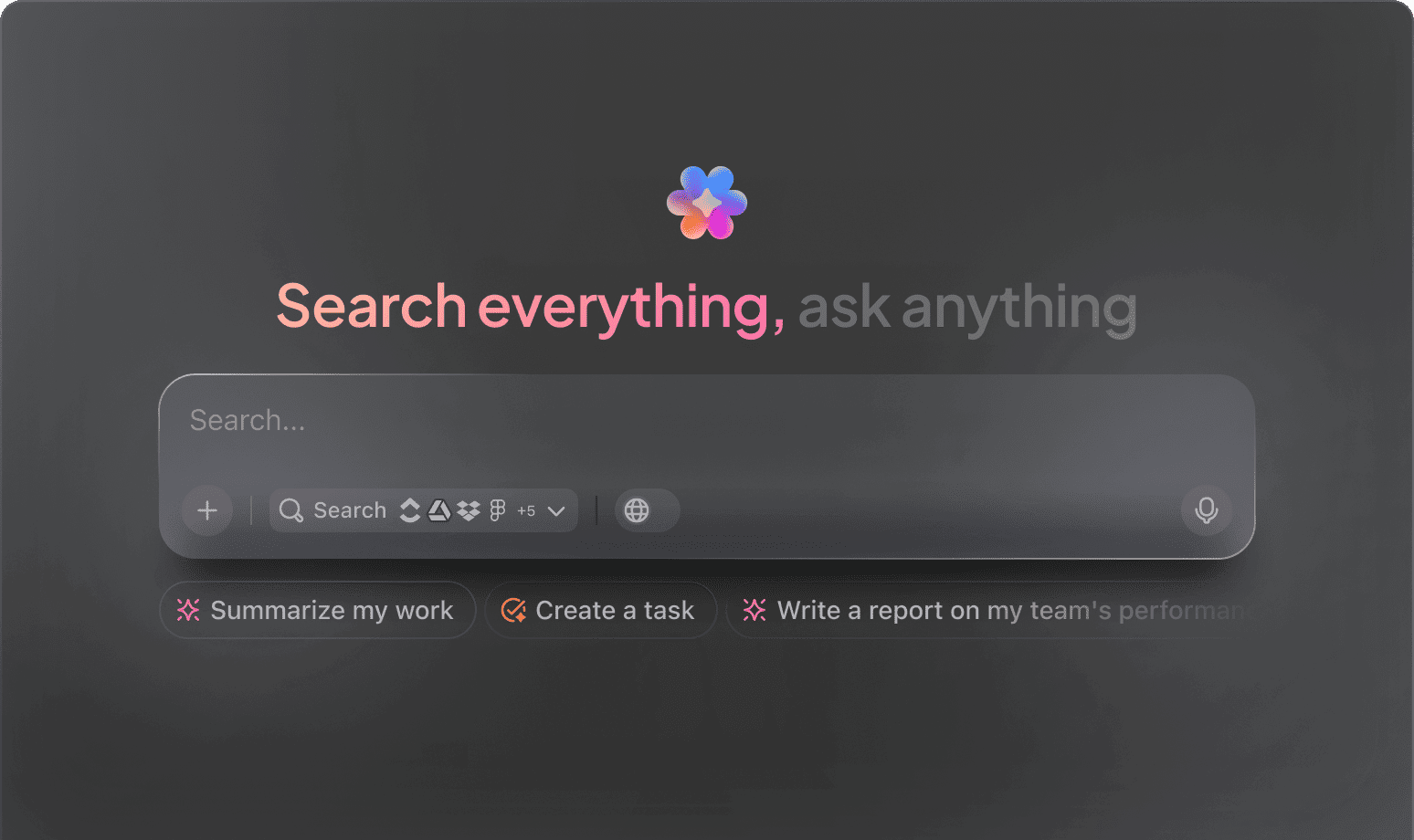AI-Powered User Testing
Top AI Prompts for User Testing Studies
Enhance your user research, simplify test management, and unlock deeper insights with ClickUp Brain.
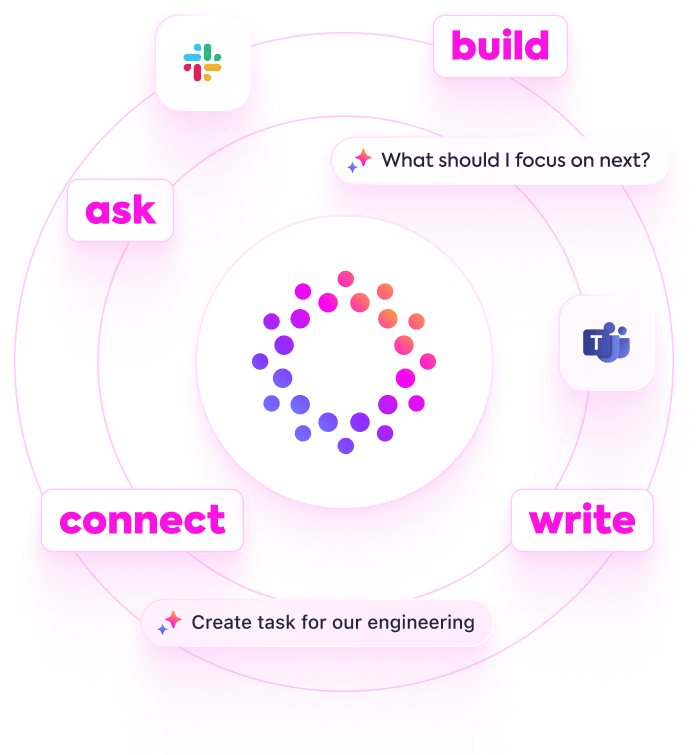
Trusted by the world’s leading businesses
AI in User Testing
Revolutionizing User Testing Studies with AI-Powered Prompts
User testing shapes the products people rely on every day, but coordinating studies, gathering insights, and iterating quickly can be overwhelming.
From recruiting participants to analyzing feedback and prioritizing improvements, user testing involves many moving parts—and countless notes, recordings, and action items. This is where AI prompts become invaluable.
Teams leverage AI to:
- Quickly identify key usability issues and patterns
- Generate test scripts, interview questions, and survey drafts effortlessly
- Summarize participant feedback and highlight critical findings
- Transform raw session notes into clear action plans and follow-up tasks
Integrated into familiar tools like docs, whiteboards, and task boards, AI in platforms such as ClickUp Brain goes beyond assistance—it organizes your research into clear, prioritized next steps.
Comparing ClickUp Brain with Conventional AI
Why ClickUp Brain Stands Apart
ClickUp Brain integrates seamlessly, understands your context deeply, and is ready to assist—so you focus on insights, not explanations.
Conventional AI Solutions
- Constantly toggling between apps to collect information
- Repeating your objectives with every query
- Receiving generic, irrelevant feedback
- Hunting through multiple platforms for a single document
- Interacting with AI that only processes input passively
- Manually switching among different AI engines
- Merely a browser add-on without deep integration
ClickUp Brain
- Instantly accesses your user testing tasks, notes, and team communications
- Retains your project context and objectives continuously
- Provides detailed, context-aware guidance
- Offers a consolidated search across all your resources
- Supports hands-free input with Talk to Text
- Automatically selects the optimal AI model: GPT, Claude, Gemini
- Available as a native Mac & Windows application optimized for performance
User Testing Study Prompts
15 Essential AI Prompts for User Testing Studies (Powered by ClickUp Brain)
Accelerate user research—insights, analysis, and reporting simplified.

Identify 5 key usability issues from the ‘Mobile App Beta Feedback’ document.
Use Case: Quickly uncovers common user pain points from collected feedback.
ClickUp Brain Behaviour: Analyzes comments and notes in the linked doc to highlight frequent usability challenges.

What are the top 3 user preferences for onboarding flows in SaaS platforms under $50/month?
Use Case: Guides design decisions with data-driven user insights.
ClickUp Brain Behaviour: Extracts and summarizes trends from internal research files; Brain Max can supplement with relevant external data if available.

Draft a user testing script focused on accessibility features, referencing ‘Accessibility Guidelines v2’ and previous test notes.
Use Case: Ensures consistent and thorough testing aligned with standards.
ClickUp Brain Behaviour: Pulls key points from linked documents to create a structured, clear testing script.

Summarize comparative task completion rates between Version A and Version B from the ‘Usability Metrics Q1’ report.
Use Case: Supports data-driven decisions without manual number crunching.
ClickUp Brain Behaviour: Extracts quantitative and qualitative data from reports and presents a concise comparison.

List common navigation issues reported in the ‘User Journey Feedback’ folder across web and mobile platforms.
Use Case: Highlights areas needing design improvements.
ClickUp Brain Behavior: Scans feedback documents to identify recurring navigation problems and their contexts.

From the ‘Error Message Logs’ doc, generate a checklist of critical UI errors to address in the next sprint.
Use Case: Streamlines prioritization of bug fixes.
ClickUp Brain Behavior: Extracts error types and frequencies, formatting them into an actionable task list.

Summarize 3 emerging trends in user engagement from post-2023 usability studies and analytics reports.
Use Case: Keeps product teams informed on evolving user behaviors.
ClickUp Brain Behavior: Identifies patterns and insights from linked research and data files.

From the ‘Gen Z User Survey Q2’ doc, summarize key feedback on app personalization features.
Use Case: Aligns development priorities with younger user expectations.
ClickUp Brain Behavior: Analyzes survey responses to extract dominant themes and preferences.

Write concise and engaging microcopy for the ‘Feedback Submission’ screen using the tone guidelines in ‘BrandVoice.pdf’.
Use Case: Accelerates UI text creation while maintaining brand voice.
ClickUp Brain Behavior: References tone documents to suggest varied copy options for interface elements.

Summarize recent changes in GDPR compliance affecting user data collection in testing studies.
Use Case: Ensures research protocols meet updated legal requirements.
ClickUp Brain Behavior: Reviews linked compliance documents and highlights key updates impacting user testing.

Generate guidelines for remote user testing session setups, referencing internal best practices and regional regulations.
Use Case: Standardizes testing procedures across distributed teams.
ClickUp Brain Behavior: Extracts rules and recommendations from documents to form a comprehensive checklist.

Create a post-test analysis checklist based on ‘User Testing QA Standards’ and recent project retrospectives.
Use Case: Improves consistency and thoroughness in data review.
ClickUp Brain Behavior: Compiles criteria and steps into a clear, actionable list for analysts.

Compare participant satisfaction scores across different prototype versions using the ‘Satisfaction Survey’ docs.
Use Case: Supports prioritization of design changes based on user sentiment.
ClickUp Brain Behavior: Summarizes survey data into an easy-to-read comparison table or summary.

What usability challenges are emerging in mobile banking apps since 2023?
Use Case: Guides UX improvements with up-to-date research insights.
ClickUp Brain Behavior: Synthesizes findings from internal studies, user feedback, and industry reports.

Summarize key accessibility gaps identified in the ‘Regional User Testing Feedback’ folder (focus on screen readers, color contrast, and navigation).
Use Case: Drives targeted enhancements for inclusive design.
ClickUp Brain Behavior: Extracts and ranks user-reported issues from surveys, notes, and tagged tickets.
Innovate Efficiently with ClickUp Brain
Cut down on revisions, unify your team’s efforts, and produce superior results through AI-enhanced processes.





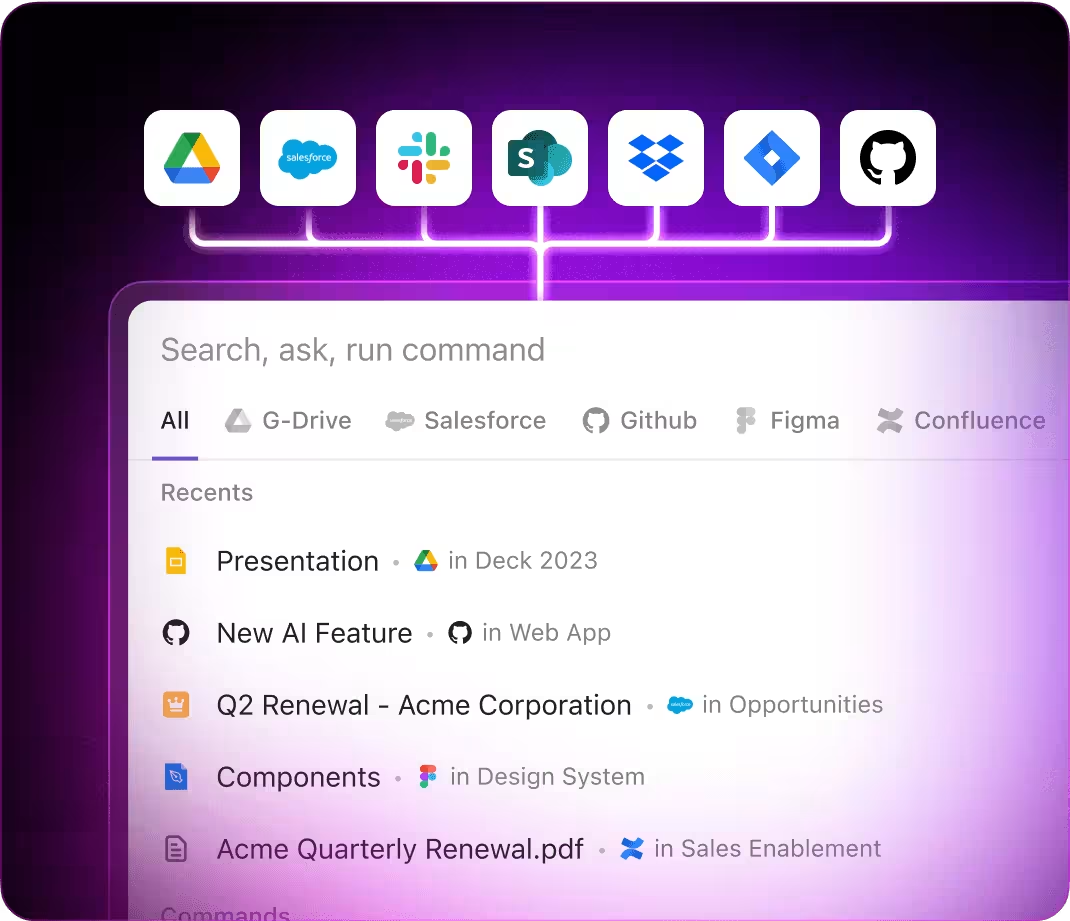
AI Applications
Leading AI Applications in User Testing Research with ClickUp Brain
Speed up testing cycles, enhance insight quality, and discover user-centered innovations through AI assistance
From Raw Feedback to User Testing Reports
Early user testing feedback can be fragmented and hard to organize. ClickUp Brain helps you convert these scattered insights into clear, actionable testing reports—right inside ClickUp Docs.
Leverage ClickUp Brain to:
- Transform unstructured user comments into polished test summaries
- Create fresh test scenarios informed by previous study results (using context-sensitive AI writing)
- With Brain Max, instantly explore past user sessions, feedback logs, and test artifacts to inspire your next usability evaluation.
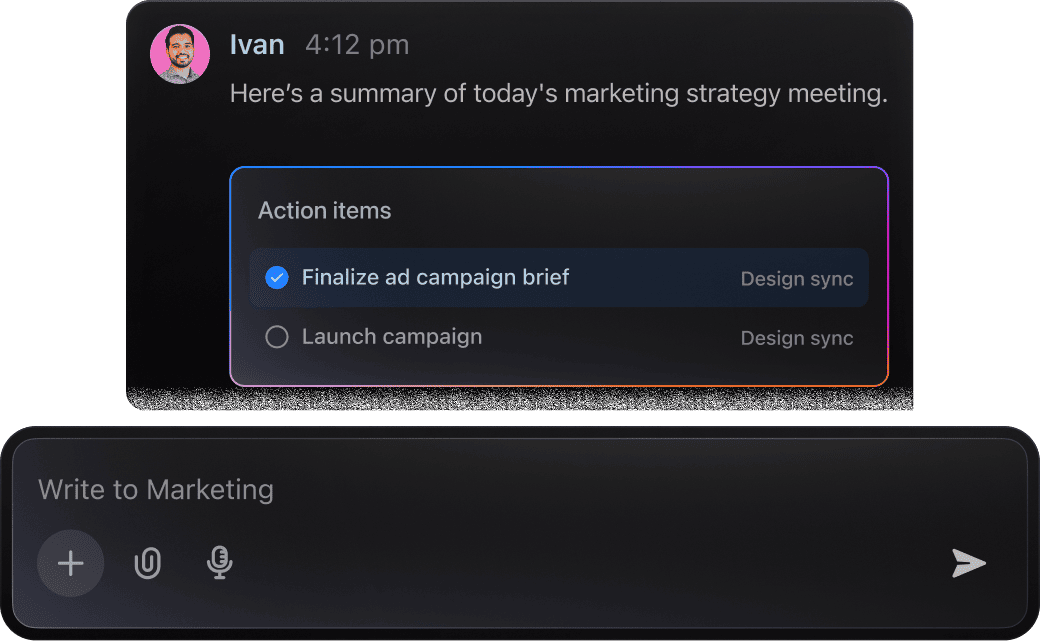
From Design Concepts to Engineering Execution
Engineers often navigate through extensive notes and feedback loops. ClickUp Brain empowers you to pinpoint key tasks, identify risks early, and craft clear next steps from complex documentation.
Leverage ClickUp Brain to:
- Condense detailed design conversations captured in tasks or Docs
- Convert marked-up design feedback into actionable engineering assignments
- Automatically generate defect logs or project handoff briefs
- With Brain Max, swiftly retrieve past design choices, component analyses, or build discussions across your workspace—eliminating tedious searches through CAD documentation.
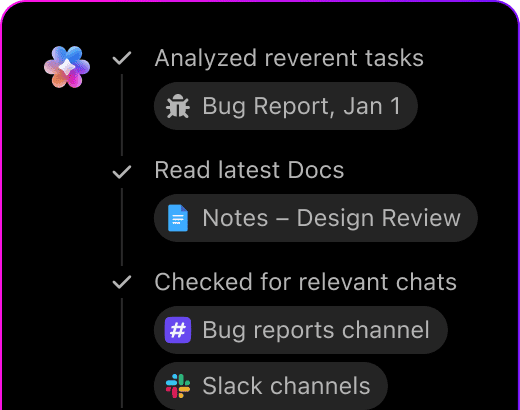
User Testing Study Prompts with ClickUp Brain
Managing user testing sessions, analyzing responses, and refining designs can be overwhelming. ClickUp Brain simplifies this process by extracting key findings and crafting user-focused test prompts that align with your research goals.
Leverage ClickUp Brain to:
- Convert raw user feedback into clear, prioritized insights
- Create tailored test scripts that reflect your study objectives
- Transform discussion notes into actionable follow-ups or bug reports
- Brain Max enhances this by effortlessly referencing past user tests or related product feedback, supporting continuous improvement across testing phases.
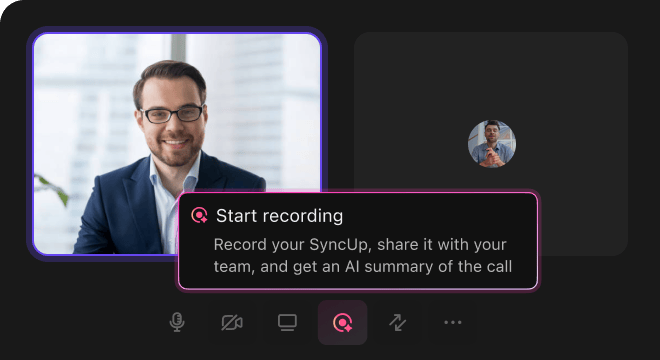
AI Advantages
How AI Prompts Revolutionize User Testing Research
Integrating AI prompt workflows enhances every phase of your user testing process:
- Accelerate hypothesis creation: Quickly generate test scenarios, participant questions, and feedback forms
- Reduce iteration cycles: Detect usability issues early by analyzing test data and user comments
- Align your team: AI-crafted summaries and reports ensure everyone shares the same insights
- Make informed choices: Use prompts to gather competitor benchmarks and compliance checks
- Innovate testing methods: Uncover fresh approaches beyond standard usability protocols.
Everything works together smoothly in ClickUp, turning your AI-generated content into actionable docs, tasks, and dashboards that drive your research forward.
Prompt Guidelines
Crafting Effective Prompts for User Testing
Clear prompts lead to actionable feedback.

Provide detailed user testing scenarios
Vague prompts yield vague feedback. Specify details like user demographics (e.g., “remote workers aged 25-40”), testing goals (e.g., “ease of navigation” or “feature discoverability”), or device types (e.g., “mobile app on Android”).
Example: “Outline tasks for usability testing of a mobile banking app targeting young professionals.”

Use comparative prompts to uncover preferences
AI excels at drawing distinctions between options. Use prompts like “compare feature A vs feature B” to analyze usability differences, user satisfaction, or interface effectiveness.
Example: “Compare user engagement between dark mode and light mode in a productivity app.”

Frame prompts around user goals
Treat your prompt as a user objective you want AI to address. Instead of generic requests, focus on outcomes:
Example: “Design a task flow for onboarding new users to a project management tool emphasizing simplicity and clarity.”

Specify desired output formats
Need a test script, feedback summary, issue log, or survey questions? Clearly state the format. AI delivers better results when output expectations are defined.
Example: “Generate a checklist of 7 usability issues for an e-commerce checkout process with brief explanations.”
Enhance User Testing Insights with ClickUp Brain
ClickUp Brain goes beyond basic task tracking—it's your strategic partner throughout every phase of user testing research.





